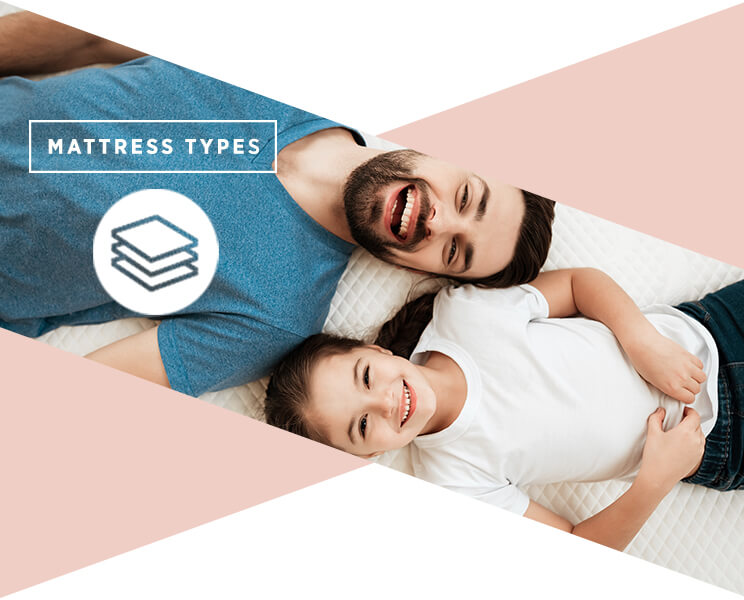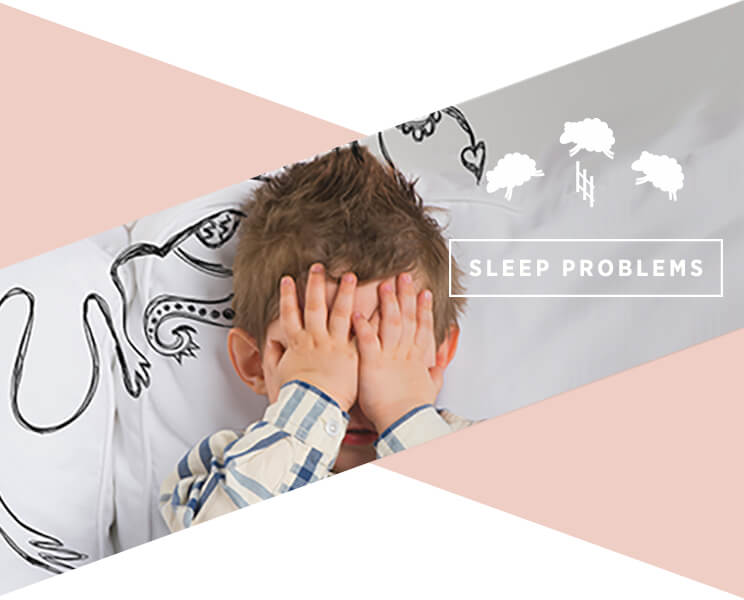If you’re a parent, you know just how important a good night’s sleep is for children. A lack of quality sleep can bring out problems at school and at home.
We’ve crafted a handy guide that details everything you need to know about children’s sleep. From how to make the nightly bed time routine a breeze, to choosing the mattress that’s best for their growing bodies, it’s all right here.
How Much Sleep is Enough?
The amount of sleep you need depends on your age. Young children need plentiful rest to sustain all the energy their body exerts as they grow. This chart details the suggested amount of sleep your child should get, through each stage of life:
How to Choose the Best Mattress for Your Child
Because, children optimally spend a very large portion of their lives sleeping, finding the right mattress is exceptionally important. Here are some key points to consider that will ensure you find the perfect match.
What’s the Best Mattress Size?
It’s the first question to tackle: do you go with a twin, or a full? While a kid’s full size mattressmight be a bit more costly upfront, it’s an investment that will last for years and even end up saving you money in the long run. A good quality mattress can last up to 10 years, and you can bet your child will do a lot of growing in that time. The extra leg room is a daily luxury, and your kids will be sleeping comfortably from childhood, to teenage years and probably even young adulthood.
While the full size mattress is a practical choice that makes it easier to transition your kid’s rooms as they grow, there are cases where a twin size mattress might be the better option. Space-saving bed frames, like a loft bed with storage, a trundle bed or bunk bed frame might only be available in twin sizes. Depending on your personal scenario, having the extra storage space, or extra bedding might outweigh the benefits of picking a full size mattress.
What’s Better: Plush or Firm?
After mattress size is decided, comes the question of mattress feel. Mattresses on the firmer side are generally recommended for children. The firmness provides back support – essential for proper spine alignment in young, growing bodies. It’s also an easy transition from a crib mattress and is ideal for children who are stomach-sleepers. If your little one is a side-sleeper, a medium to soft mattress might be a good option.
Types of Mattresses
Another major factor to consider are the materials used in your child’s mattress. When shopping, you’ll find that there are three main types of mattresses: the traditional innerspring, the memory foam and the hybrid. Each touts its own special benefits that align with unique sleeping habits.
The traditional innerspring mattress provides long-lasting support you can rely on—it’s the perfect starter mattress, meeting the support and comfort level for many.
On the other hand, if your child has specific sleeping habits, they may benefit from some features of memory foam. For example, if they get hot throughout the night, a mattress with cooling gel memory foam might just do the trick. Or, if your child suffers from allergies, a hypoallergenic mattress resistant to dust mites, fungus and bacteria, can truly make all the difference.
The third option, the hybrid mattress, combines layers of memory foam and individually wrapped coils to help with motion separation throughout the night. If you’re trying to choose between the contouring comfort of memory foam and the tried-and-true support of springs, this might be the perfect fit.
How to Create a Sleep-Friendly Environment
Having the right mattress is a fabulous start, but here comes the even trickier part: actually getting your kids to sleep. Try out our top tips to help little ones get the rest they need:
- Encourage an active lifestyle: Studies show that increased physical activity during the day can lead to better sleep, as well as better health. Riding bikes or playing ball are fun after-school activities.
- Avoid stimulants: Children are sensitive to the energy-boosting effects of caffeine and sugar, so it’s best to limit or completely avoid those treats in the late afternoon and evening.
- Create a “wind-down” period: It’s hard to fall asleep right away. By reserving an hour before bed to relax, you’re conditioning the mind to prepare for sleep. Since blue lights found in electronic devices are known for disturbing melatonin production, the hormone that promotes sleep, it’s best to stay free of them during this wind-down period. Bath time and reading are great calming activities.
- Try out color psychology: Cooler colors have a calming effect on the human psyche, so hues like ultra-violet and soft green can help create a tranquil vibe in the bedroom while still being fun and playful.
- Set the ambiance: Make the room comfortable by keeping it cool and dark—if your child prefers a nightlight, opt for a red bulb in lieu of harsh blue light. And while traditionally, silence is golden, some children might benefit from a white noise machine or soothing nature sounds to lull them straight to sleep.
- Make it comforting: To truly rein in that serene energy, make sure that your kid’s sleep environment is inviting. Top off the bed with irresistibly cozy bedding and plush pillows.
- Stay consistent: Most importantly, sticking to a regular routine will keep your children on a natural sleep schedule. Whether following one of our tips, or all of them, it’s consistency that will have the greatest effect.
How to Solve Common Sleep Problems
Two of the most common sleep issues children encounter are nightmares and insomnia. It can be difficult watching your child struggle with what should be a peaceful, rejuvenating time, but thankfully there are lots of ways to help alleviate these problems.
Nightmares are very common, especially in young children. By following our sleep-friendly environment tips, you can instill a positive bedtime routine that makes your children happy and receptive to bed time. Sometimes giving your child a soothing object, like a favorite blanket, pillow or stuffed animal, can help them comfort themselves after a nightmare. Above all else, the best thing is to comfort your child while remaining positive.
There are also a few ways to combat insomnia. Most of the time, insomnia is triggered by stress or anxiety. By identifying the stressors in your child’s life (homework, friends, etc.), you may be able to help them work get to the core of the issue. If your child is old enough, rather than spending time on the phone or watching TV before bed, encourage them to journal. It’s a great stress-relieving activity as they wind-down before bed.
So, how did we do? We’d love to hear your own stories and tips about sleep health! Children’s sleep is so important, and one thing’s for sure—every child deserves the time to rest, rejuvenate and dream in the comfort of their own bed. It’s why Ashley has a mission of giving kids the gift of sleep with the program Hope to Dream. Portions of each mattress purchase go towards the program, and thanks to your help, we’ve donated over 50,000 mattresses to children in need.











